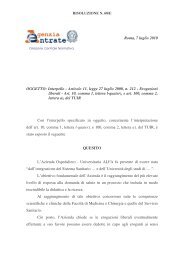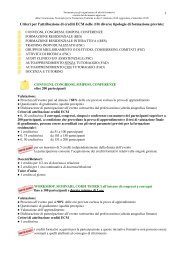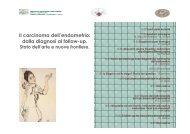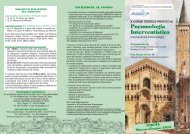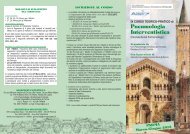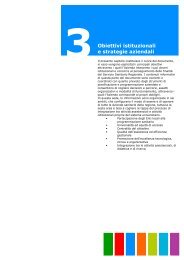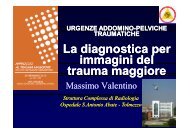COLLEGIO DI DIREZIONE - Azienda Ospedaliera di Parma
COLLEGIO DI DIREZIONE - Azienda Ospedaliera di Parma
COLLEGIO DI DIREZIONE - Azienda Ospedaliera di Parma
Create successful ePaper yourself
Turn your PDF publications into a flip-book with our unique Google optimized e-Paper software.
and accurate quantification of D-<strong>di</strong>mer in clinical laboratories. Blood Coagul Fibrinolysis 23:164-167 (C) 2012 Wolters<br />
Kluwer Health vertical bar Lippincott Williams & Wilkins.<br />
42) Lippi, G; Mercadanti, M; Aloe, R; Targher, G (2012) Erythrocyte mechanical fragility is increased in<br />
patients with type 2 <strong>di</strong>abetes EUROPEAN JOURNAL OF INTERNAL ME<strong>DI</strong>CINE 23(2):150-153<br />
IF=1.657 [Article]<br />
Background: Anemia is common among patients with type 2 <strong>di</strong>abetes. We determined whether type 2 <strong>di</strong>abetic patients<br />
significantly <strong>di</strong>ffered in erythrocyte mechanical fragility as compared with non<strong>di</strong>abetic subjects. Methods: We recruited<br />
25 Caucasian patients with type 2 <strong>di</strong>abetes (14 men and 11 women; mean age 58 +/- 8 years) and 25 age-, race- and sexmatched<br />
non<strong>di</strong>abetic in<strong>di</strong>viduals. The fragility of erythrocytes was tested by inducing mechanical hemolysis by double<br />
aspiration of K(2)EDTA blood through a 0.5 mL insulin syringe equipped with a very thin needle. The plasma was then<br />
separated from the blood cells by centrifugation at 2000 xg for 15 min at room temperature. A Beckman Coulter DxC<br />
800 was used to measure the hemolysis index by <strong>di</strong>rect spectrophotometry. Results: Compared with matched<br />
non<strong>di</strong>abetic controls, type 2 <strong>di</strong>abetic patients had a significantly increased mechanical fragility of erythrocytes<br />
(hemolysis index ratio 21 +/- 13 vs. 14 +/- 10, p=0.02). Univariable linear regression analysis revealed that there was a<br />
strong positive association between percent hemolysis and fasting plasma glucose (r=0.669, p



